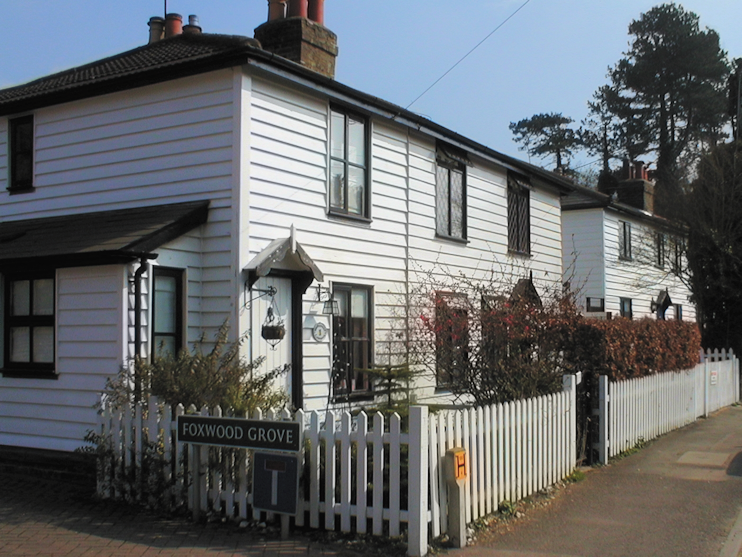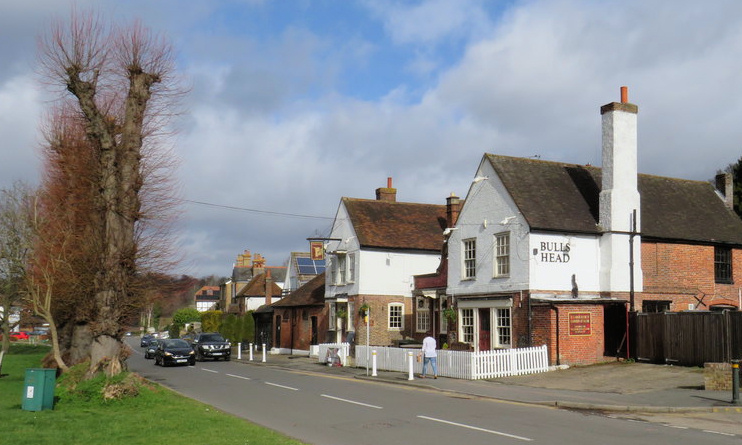Pratts Bottom
Pratts Bottom, Bromley
An expanded village situated on the London/Kent border just beyond the southern tip of Chelsfield

The village’s 14th-century name derives from the family of Stephen Prat and from the low-lying location of the settlement, nestling in a valley at the foot of Rushmore Hill.
Chelsfield Grange, now known locally as the Grange, may have been built in the late 15th century but has since been remodelled and enlarged.
Shown in the photo below (taken in March 2019), the Bull’s Head public house was in existence by the early 17th century, when poorhouses for the parish of Chelsfield were built on the common land.

A toll gate was erected on the London to Rye road in 1748. The Porcupine inn stood at the top of Rushmore Hill by 1791, when its sale particulars referred to the village as ‘Spratts Bottom’.
The armed hold-up of a mail coach at Pratts Bottom in 1798 prompted the offer of a £240 reward but the highwayman was never caught.
In the early 19th century the village gained a reputation as fertile territory for recruitment to the Mormon faith as a result of its remoteness from the parish church at Chelsfield. The quaint, simple little All Souls church was built in response to the rapid growth of Pratts Bottom later in the century, when the Grange served as a grammar school.
The turnpike cottages were demolished when the road was widened in the late 1920s. Grange Drive and Orchard Road were laid out in the 1930s and 1950s on the former grounds of the Grange.
With its terraces of weatherboarded and flint cottages and its ancient inn, Pratts Bottom has been called “almost the archetype of English villages” – but unsympathetic late-20th-century housebuilding has undermined its former charm.
Residents of the Chelsfield and Pratts Bottom ward tend to be white, middle-aged, married homeowners with at least one car.
